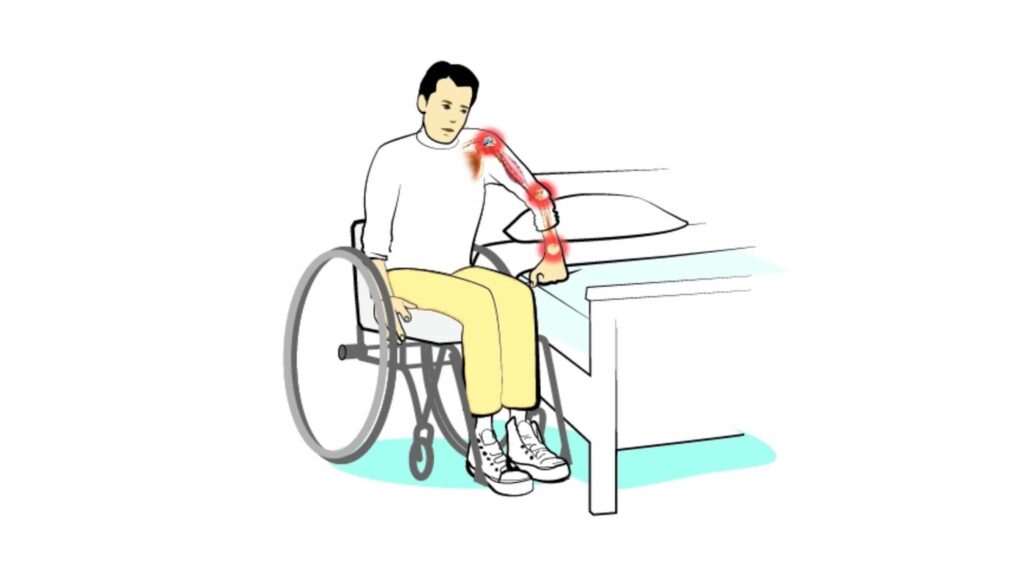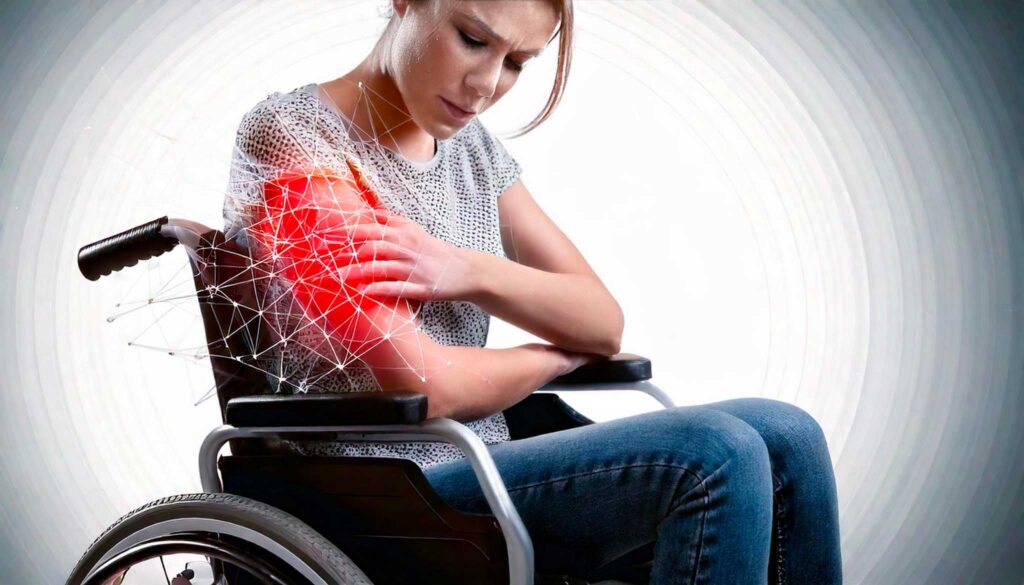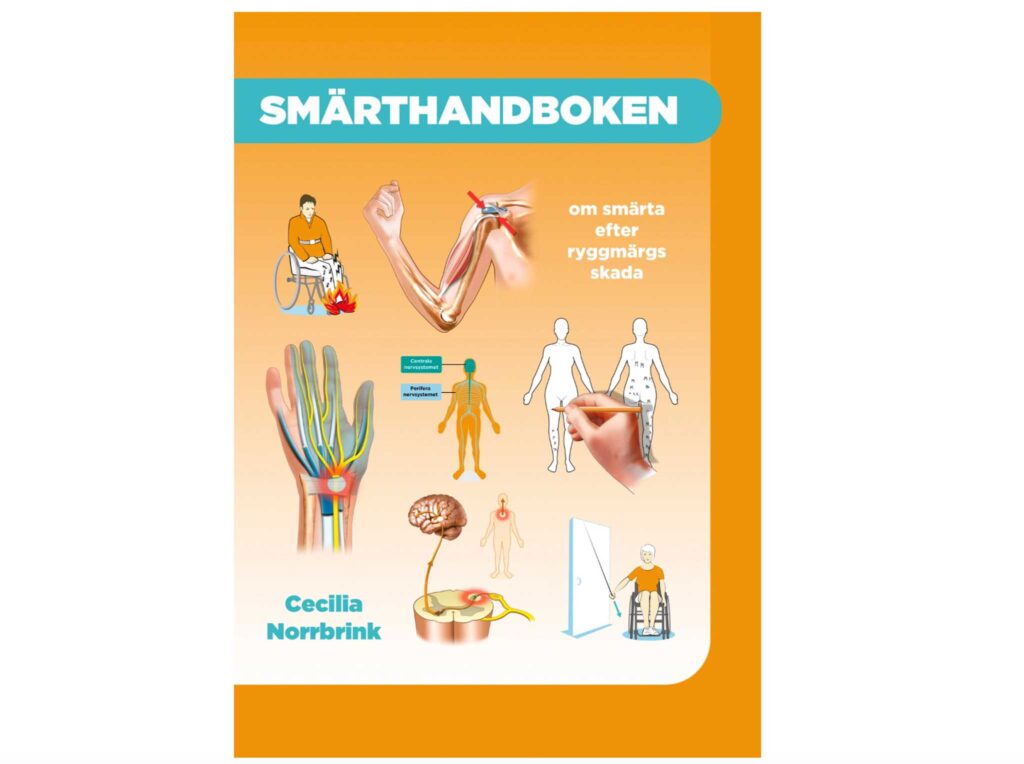Pain is a significant problem for many individuals affected by a spinal cord injury. Two-thirds experience pain, the most common pain problems relates to overuse issues and nerve pain resulting from the spinal cord injury.

In order to treat a pain condition in the best possible manner, it’s important to understand the type of pain it involves and, to the extent possible, what causes the pain condition. A thorough medical history with focus on the pain narrative and a physical examination are of utmost importance, and healthcare providers should dedicate ample time to both aspects in a pain analysis.
There are mainly two types of pain that affect individuals with a spinal cord injury: nociceptive pain (due to tissue damage) and neuropathic pain (nerve pain, due to damage to the spinal cord or other parts of the nervous system).

Nociceptive pain
Nociceptive pain is the pain that can arise from the skin, joints, muscles, tendons, ligaments and internal organs. Most common are musculoskeletal pain conditions, often resulting from overuse of the musculoskeletal system. Structures around the shoulder joint are particularly affected. Even pain resulting from a fracture, a wound, or spasticity is also classified as nociceptive pain.
Nociceptive musculoskeletal pain is often related to movement or position, which means that the pain either worsens or improves with changes in body posture or movement. Typically, it increases throughout the day as the painful tissues are increasingly stressed. Muscles, tendons, and ligaments are tender upon examination, and the pain is often described as dull or throbbing, although all descriptions may occur.
A common cause of muscle pain is unilateral muscle work where the muscles receive too little oxygen and nutrients. Other reasons are inflammations in muscle attachments due to overloading and pain from joints caused by osteoarthritis. If the pain is relieved by anti-inflammatory drugs or by paracetamol, its likely that the pain is nociceptive.
Nociceptive pain can also originate from the internal organs of the chest, abdomen, and pelvis, and is then referred to as visceral pain. It may be unrelated to spinal cord injury and caused by conditions such as ulcers or gallstones. Research has shown that up to a third of individuals with a spinal cord injury report persistent pain or discomfort from the abdomen. A thorough examination to investigate the underlying cause of the symptoms is important, but unfortunately, the cause of the pain and/or discomfort is not always identified.

Foto AI
Neuropathic pain
Neuropathic pain, or nerve pain, is pain that arises from disease and damage in the nervous system. It can occur in the peripheral nerves, the spinal cord, or the brain. Approximately 45 percent of individuals affected by a spinal cord injury develop neuropathic pain at or below the level of the injury. The pain is localized to an area with sensory impairment or loss. Among those experiencing nerve pain, the pain is often rated as the most significant problem.
Nerve pain does not affect everyone who sustains a spinal cord injury or other nerve damage, and why some develop neuropathic pain while others do not, we still do not know. The extent of the spinal cord injury has no bearing on the extent and severity of the pain. Neuropathic pain at the level of the injury may result from damage to the spinal cord or injury to the peripheral nerves that travel from various areas of the body to the spinal cord. Pain below the level of the injury is due to damage to the spinal cord. Pain at the level of the injury can be described as a ribbon around the trunk but may also occur on only one side of the trunk, alternatively in an arm or a leg. Pain at the level of the injury typically arises early after a traumatic injury and remains relatively constant over time.
Neuropathic pain after a spinal cord injury is often described as burning, stabbing, tingling, sharp, piercing, throbbing, or like electric shocks but can be described in other ways as well. The pain may be constant or come and go. Increased sensitivity to touch, cold, or painful stimuli may also occur. This means that, for example, the touch of clothes or sheets that normally wouldn’t cause pain can be perceived as painful. Nerve damage can also cause non-painful but unpleasant sensations such as cold sensations and tingling.

This text is an abbreviated version of the original text written by Cecilia Norrbrink, licensed physiotherapist and associate professor in rehabilitation medicine. The full text and information about various treatment options and self-strategies can be found on the website www.ryggmärgsskada.se.
Read more about overused-shoulders.



